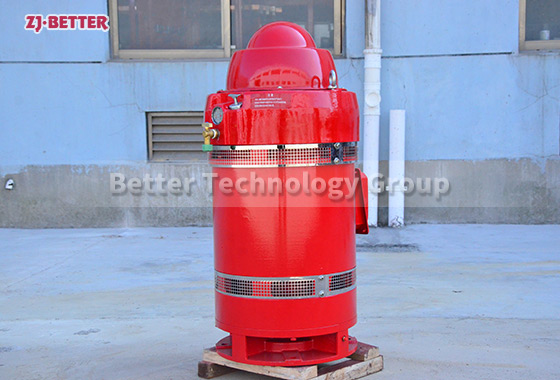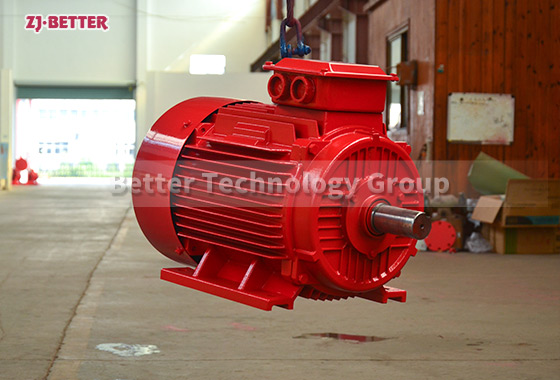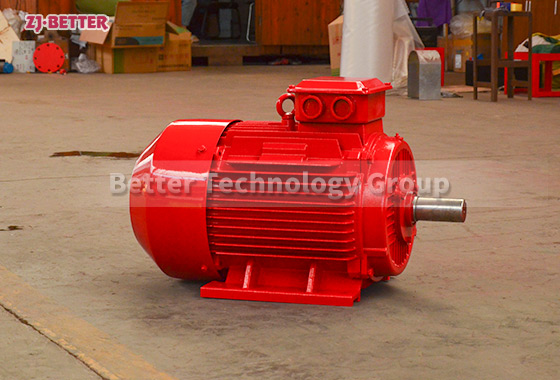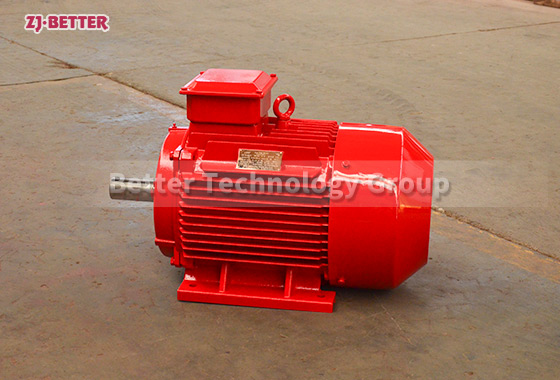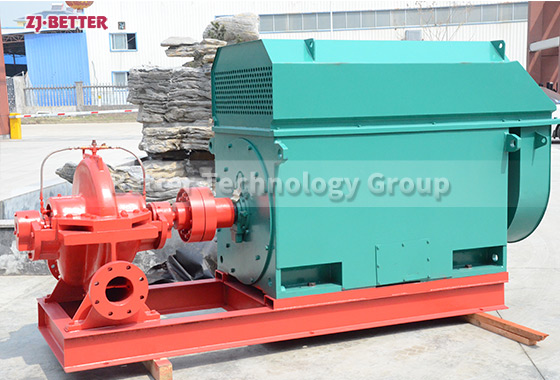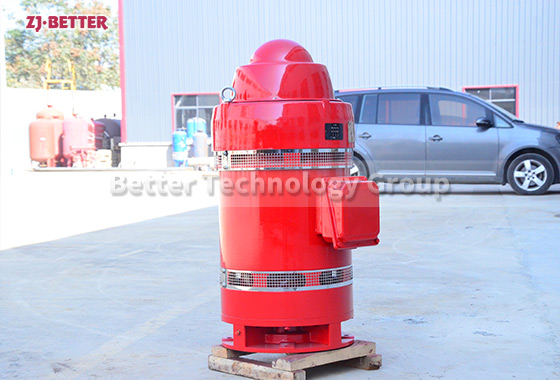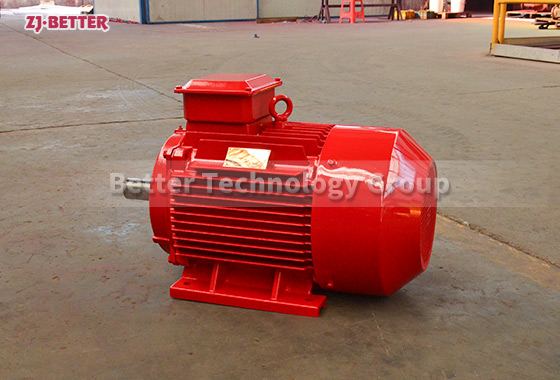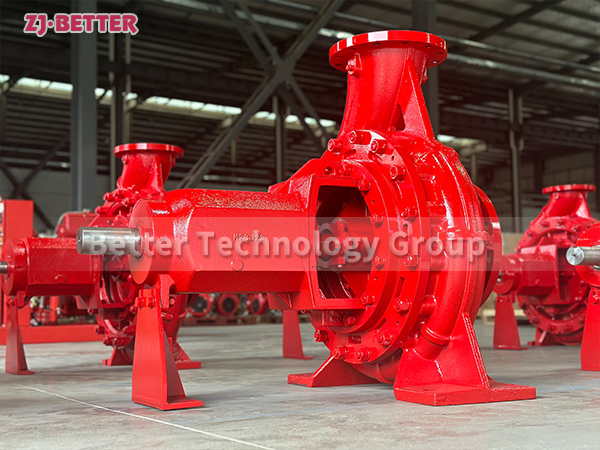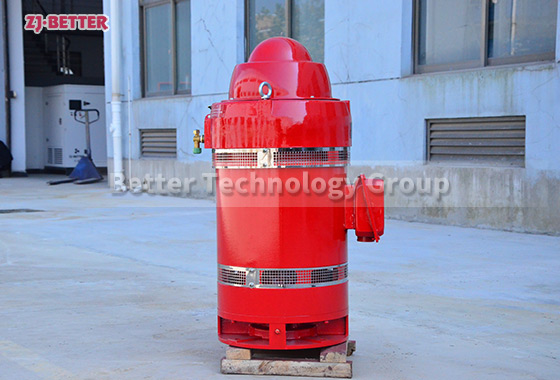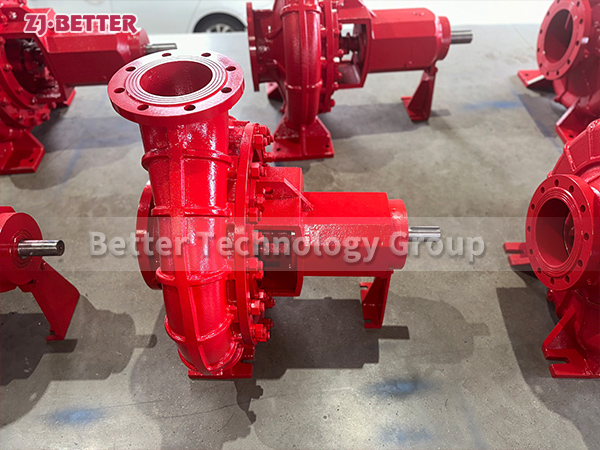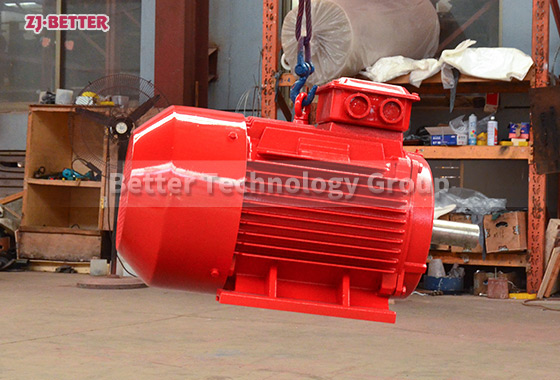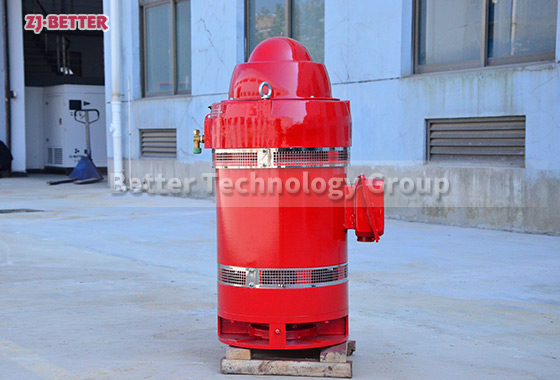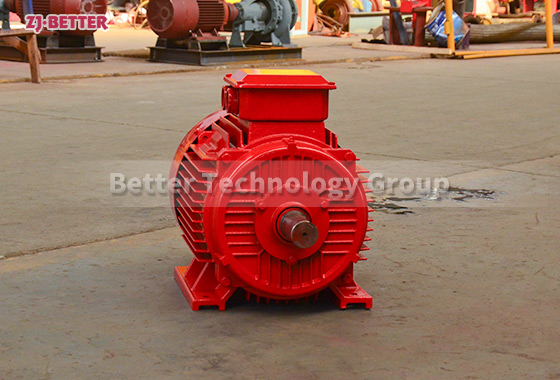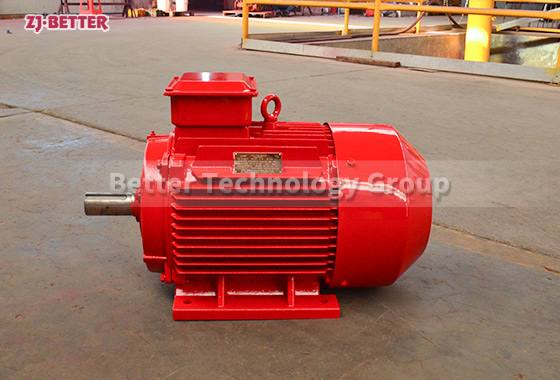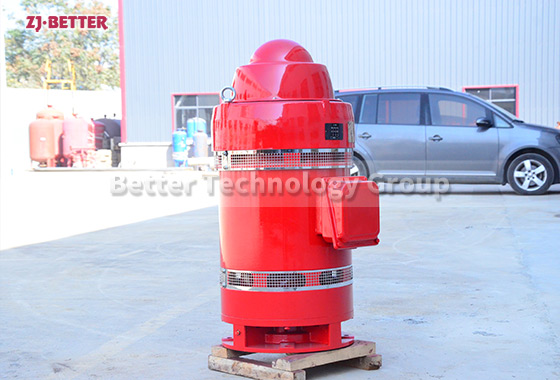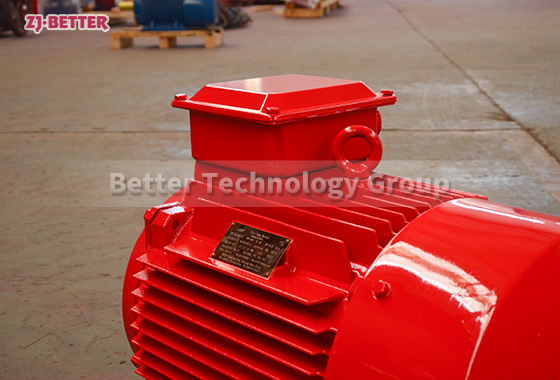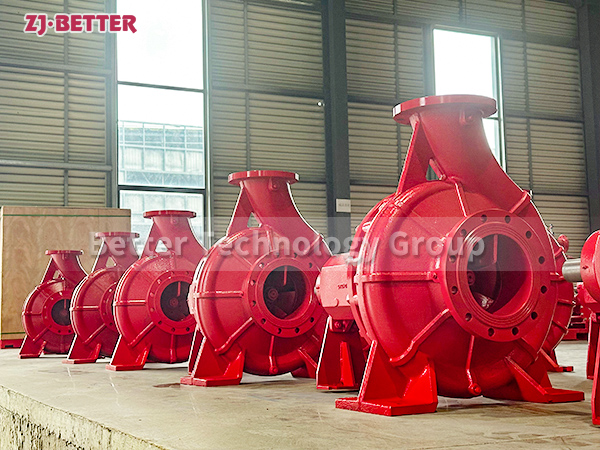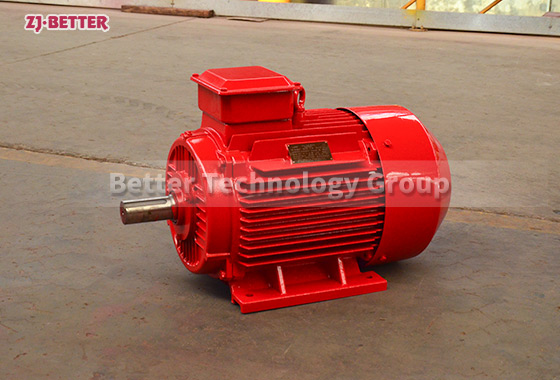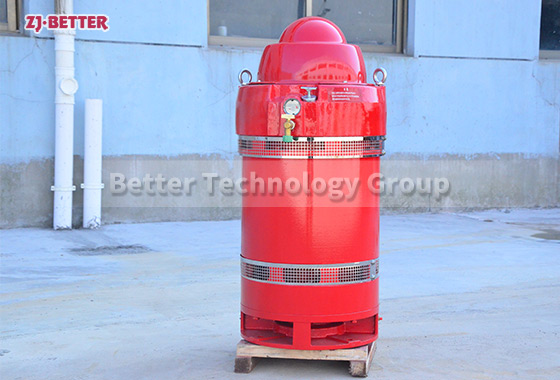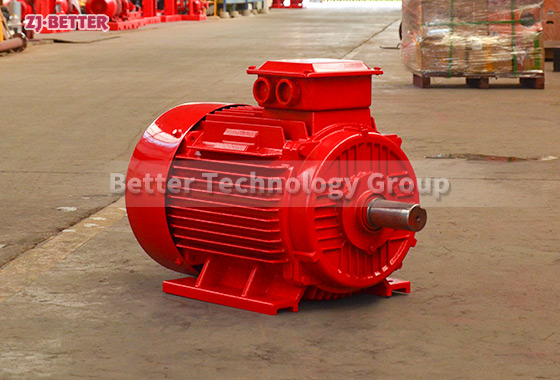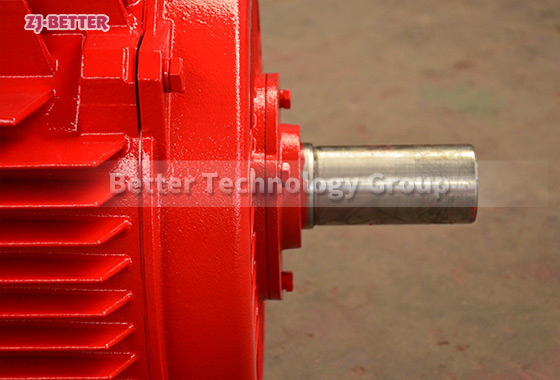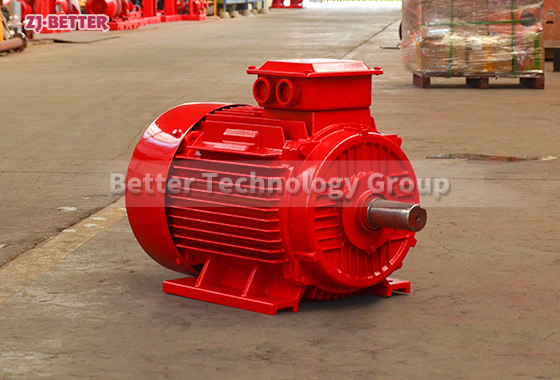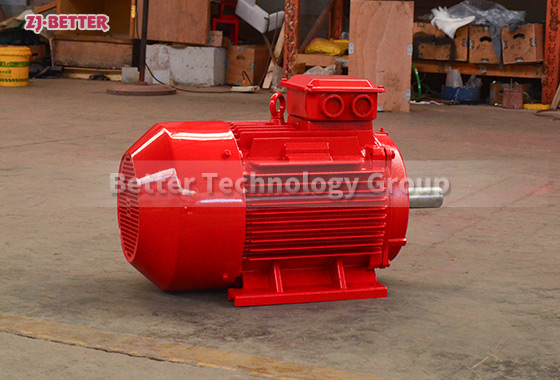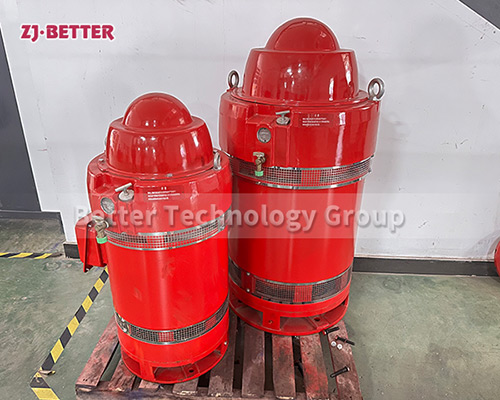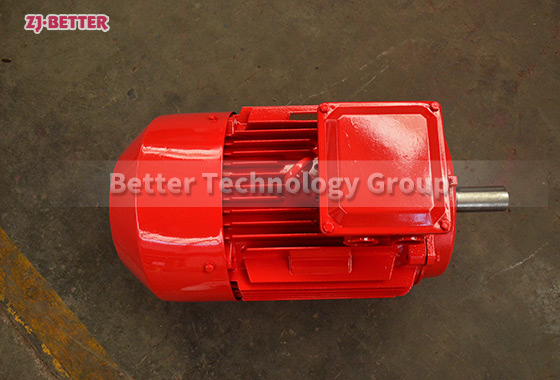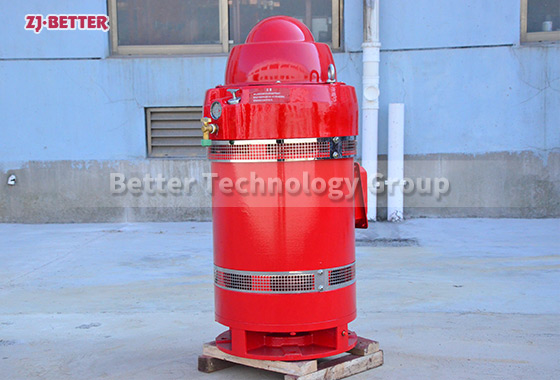Special motor for vertical fire pump
A vertical fire pump is a critical component of fire protection systems in buildings and industrial facilities. It’s designed to deliver water from a water source (such as a storage tank or a public water supply) to the fire sprinklers, hydrants, or other fire suppression devices. Special considerations are given to the design of the motor used for vertical fire pumps to ensure their reliability and performance during emergencies. Here are some aspects to consider:
**1. Fire-Rated Motor: The motor used in a vertical fire pump should be fire-rated or designed to withstand high-temperature environments for an extended period. This is crucial to ensure the motor’s functionality even when exposed to heat generated by fires.
**2. High Starting Torque: The motor should have high starting torque to overcome the initial resistance in the pump system when the pump is activated. This is especially important for vertical pumps that might be lifting water from a lower source to higher elevations.
**3. Enclosure and Protection: The motor enclosure should be designed to protect the motor from environmental factors, such as dust, water, and potential impacts. Depending on the installation location (indoor or outdoor), the motor might need to be weatherproof or have a high ingress protection (IP) rating.
**4. Reliability and Redundancy: Redundancy can be crucial for fire pump motors, as they need to operate reliably during emergencies. Consider features like dual motors or backup power sources to ensure that the pump will function even if one motor fails.
**5. Efficiency and Energy Conservation: While not sacrificing performance, an energy-efficient motor can be beneficial to reduce operational costs and environmental impact.
**6. Certifications and Compliance: Ensure that the motor meets relevant industry standards and certifications for fire pump applications. Examples include UL (Underwriters Laboratories) and FM (Factory Mutual) approvals.
**7. Motor Monitoring and Control: Incorporate monitoring and control systems that allow for remote monitoring of the motor’s condition, such as temperature, vibration, and performance. This can help detect any potential issues before they lead to motor failure.
**8. Ingress Protection (IP) Rating: If the motor will be exposed to water or dust, a suitable IP rating is essential to ensure the motor’s protection against these elements.
**9. Maintenance Considerations: The motor should be designed for easy maintenance access. Consider features that make it easier to inspect, repair, and replace components.
**10. Compatibility with Fire Pump System: The motor should be compatible with the specific type and design of the fire pump system you’re using. It should provide the required flow rate and pressure to meet fire suppression needs.
When selecting a motor for a vertical fire pump, it’s important to work closely with experienced fire protection professionals and adhere to the relevant codes and standards (such as NFPA 20) to ensure the safety and effectiveness of the fire protection system.

